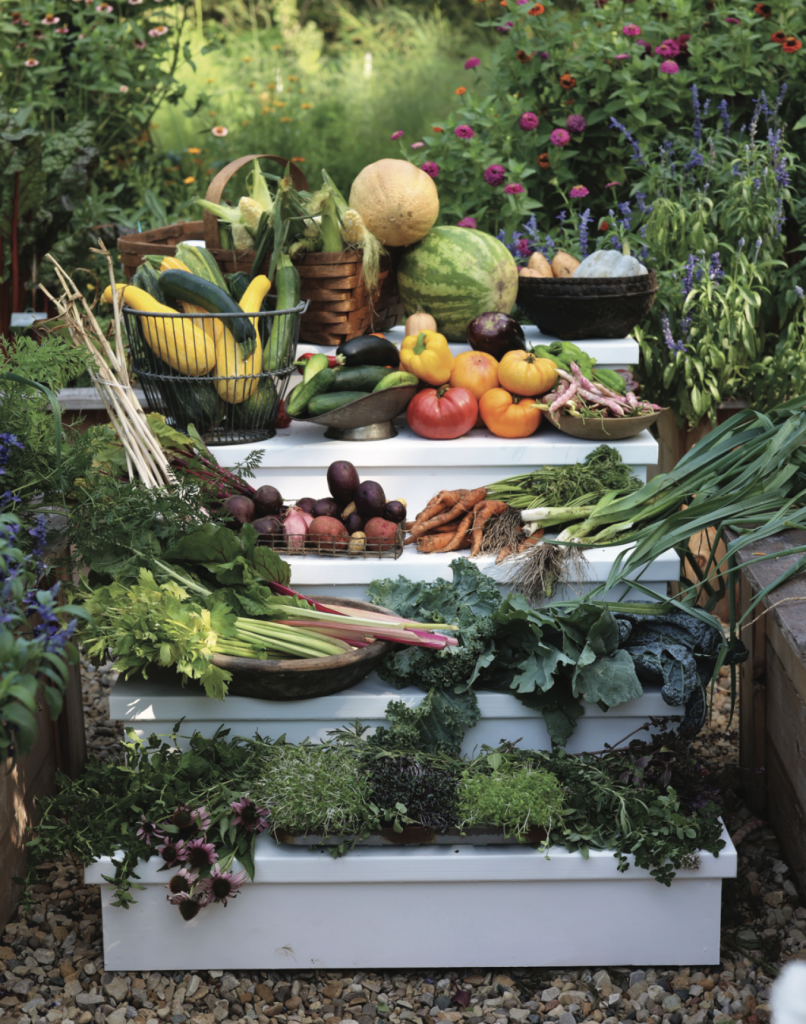Imagine stepping outside your backdoor to pick fresh, crisp vegetables right from your own garden. Growing organic vegetables in your backyard isn’t just a dream—it can be your reality.
You don’t need a green thumb or vast acres of land to cultivate a bounty of healthy, delicious produce. With a little know-how and some simple steps, you can transform your outdoor space into a thriving garden oasis. Why settle for less when you can have the freshest ingredients right at your fingertips?
Get ready to discover how easy it is to start growing your own organic vegetables and enjoy a healthier lifestyle. Dive in to learn the secrets that will make your garden flourish and keep you coming back for more!

Choosing The Right Vegetables
Choosing the right vegetables is key to a thriving backyard garden. Understanding which vegetables suit your climate and soil can boost growth. Select vegetables that you and your family enjoy eating. This ensures your effort is rewarded with meals you love.
Understanding Your Climate
Every vegetable has its ideal growing conditions. Warm-season vegetables thrive in sunny, hot climates. These include tomatoes, peppers, and cucumbers. Cool-season crops like lettuce and spinach prefer milder temperatures.
Evaluating Soil Conditions
Healthy soil is crucial for vegetable growth. Test your soil to determine pH levels. Acidic soil suits potatoes and carrots. Neutral soil is best for beans and peas. Adding compost can improve soil quality.
Considering Space And Layout
Space limitations affect vegetable choices. Tall plants like corn need more room. Compact veggies such as radishes fit well in small spaces. Plan your garden layout to maximize sunlight exposure.
Prioritizing Personal Preferences
Grow vegetables you enjoy eating. This keeps gardening fun and rewarding. If you love salads, plant lettuce and tomatoes. For stir-fries, consider bell peppers and zucchini.
Researching Plant Varieties
Different varieties offer unique benefits. Some are disease-resistant, while others yield more produce. Research which varieties suit your garden needs. This can help ensure a fruitful harvest.

Preparing Your Soil
Growing organic vegetables in your backyard starts with healthy soil. The soil provides essential nutrients for your plants to thrive. Preparing your soil properly makes all the difference in the success of your garden. Let’s explore how to get your soil ready for planting.
Testing Soil Quality
Begin by testing the soil quality. Use a simple soil test kit available at gardening stores. This helps determine pH levels and nutrient content. Knowing your soil’s condition guides you in making necessary amendments. Aim for a balanced pH for most vegetables.
Adding Organic Matter
Organic matter improves soil structure and fertility. Compost is a great choice for this purpose. It enriches the soil, enhancing its nutrient content. Spread a layer of compost over your garden area. Work it into the soil using a spade or fork.
Ensuring Proper Drainage
Good drainage prevents waterlogging, which harms plant roots. Check your soil’s drainage by observing water absorption. If water stays on the surface, improve drainage by mixing sand or gravel. These materials promote better water flow through the soil.
Loosening Compact Soil
Compact soil restricts root growth and nutrient uptake. Break up compact soil using a garden fork or tiller. Loosen the soil to a depth of at least 12 inches. This encourages roots to spread and access nutrients easily.
Managing Soil Pests
Pests can damage your crops even before they grow. Inspect the soil for signs of pests such as larvae or eggs. Use natural methods like introducing beneficial insects. They help control harmful pests without chemicals.
Natural Pest Control
Growing organic vegetables requires natural pest control methods to ensure healthy crops. Use companion planting and natural predators to keep pests away from your backyard garden. This approach helps maintain a chemical-free environment, promoting safer, organic produce.
Growing organic vegetables in your backyard is a rewarding endeavor, but it does come with its challenges. One of the most significant hurdles is dealing with pests that seem to have a particular affinity for your fresh produce. Fortunately, you can manage these pesky invaders without resorting to harsh chemicals. Natural pest control methods not only protect your plants but also maintain the health of your garden ecosystem.Understand Your Garden Ecosystem
Take time to observe your garden. Notice which bugs are common and which plants they prefer. This knowledge helps in identifying beneficial insects that can naturally curb pest populations. For example, ladybugs are excellent at keeping aphid numbers in check.Companion Planting
Certain plants can protect each other when grown together. Planting marigolds alongside tomatoes can deter nematodes and other pests. Basil can ward off flies and mosquitoes while enhancing the flavor of your tomatoes. Experiment with different plant combinations to see what works best in your garden.Handpicking And Barriers
Sometimes, the best solution is the simplest one. Spend a few minutes each day inspecting your plants. Remove any visible pests by hand, especially larger ones like caterpillars. Use physical barriers like row covers or nets to keep pests from reaching your plants.Create A Habitat For Beneficial Insects
Encourage helpful insects to take up residence in your garden. Provide them with shelter and food sources. Plant flowers like yarrow or fennel that attract predatory insects. These allies can naturally reduce pest numbers.Natural Sprays And Solutions
Consider using homemade sprays as a last resort. A mix of water and mild soap can help manage small infestations. Garlic or chili pepper sprays can deter pests with their strong odor and taste. Always test a small area of the plant first to ensure it doesn’t cause harm.Embrace the process of learning and adapting these methods in your garden. Have you tried any of these strategies before, or do you have your own tips to share? Let us know how you manage pests naturally in your backyard!
Harvesting And Maintenance
Growing organic vegetables can be a rewarding experience. Proper harvesting and maintenance are key to success. These steps ensure a bountiful yield and healthy plants. Regular attention helps keep your backyard garden flourishing. Let’s delve into these crucial practices.
Harvesting At The Right Time
Pick vegetables when they are ripe. This enhances flavor and nutrition. Check each plant regularly. Look for signs of readiness. Vegetables such as tomatoes and peppers should be firm and colorful. For leafy greens, pick the outer leaves first. This allows the plant to keep growing.
Tools For Harvesting
Use clean, sharp tools for harvesting. This prevents plant damage. Scissors or pruning shears work well for most vegetables. Avoid pulling vegetables from the plant. This can harm the roots. Always handle plants gently.
Regular Watering And Weeding
Water plants consistently. Early morning is the best time. This allows leaves to dry during the day. Weeds compete with your plants for nutrients. Remove them regularly to keep your garden healthy. Use mulch to reduce weed growth.
Monitoring For Pests And Diseases
Check plants for signs of pests. Holes in leaves or discolored patches can be indicators. Use natural remedies to control pests. Companion planting can help deter harmful insects. Regular monitoring prevents problems from spreading.
Pruning And Trimming
Prune plants to encourage growth. Remove dead or diseased leaves. This keeps plants healthy and productive. Trimming helps sunlight reach lower leaves. It also improves air circulation around plants.
Soil Maintenance
Healthy soil is crucial for plant growth. Add compost to enrich the soil. This provides essential nutrients. Rotate crops each season. This prevents soil depletion and disease buildup.

Conclusion
Growing organic vegetables in your backyard is rewarding. Fresh produce at your fingertips. Healthier meals for your family. You connect with nature. Experience the joy of watching plants thrive. Simple steps lead to a fruitful garden. Use compost to enrich soil.
Water regularly, but wisely. Protect plants from pests naturally. Enjoy the peace gardening brings. Share your harvest with friends. Inspire others to grow their own. Start small and expand with confidence. Your backyard can become a green haven. Embrace this sustainable lifestyle.
Taste the difference home-grown makes. Your efforts yield tasty and nutritious results.



